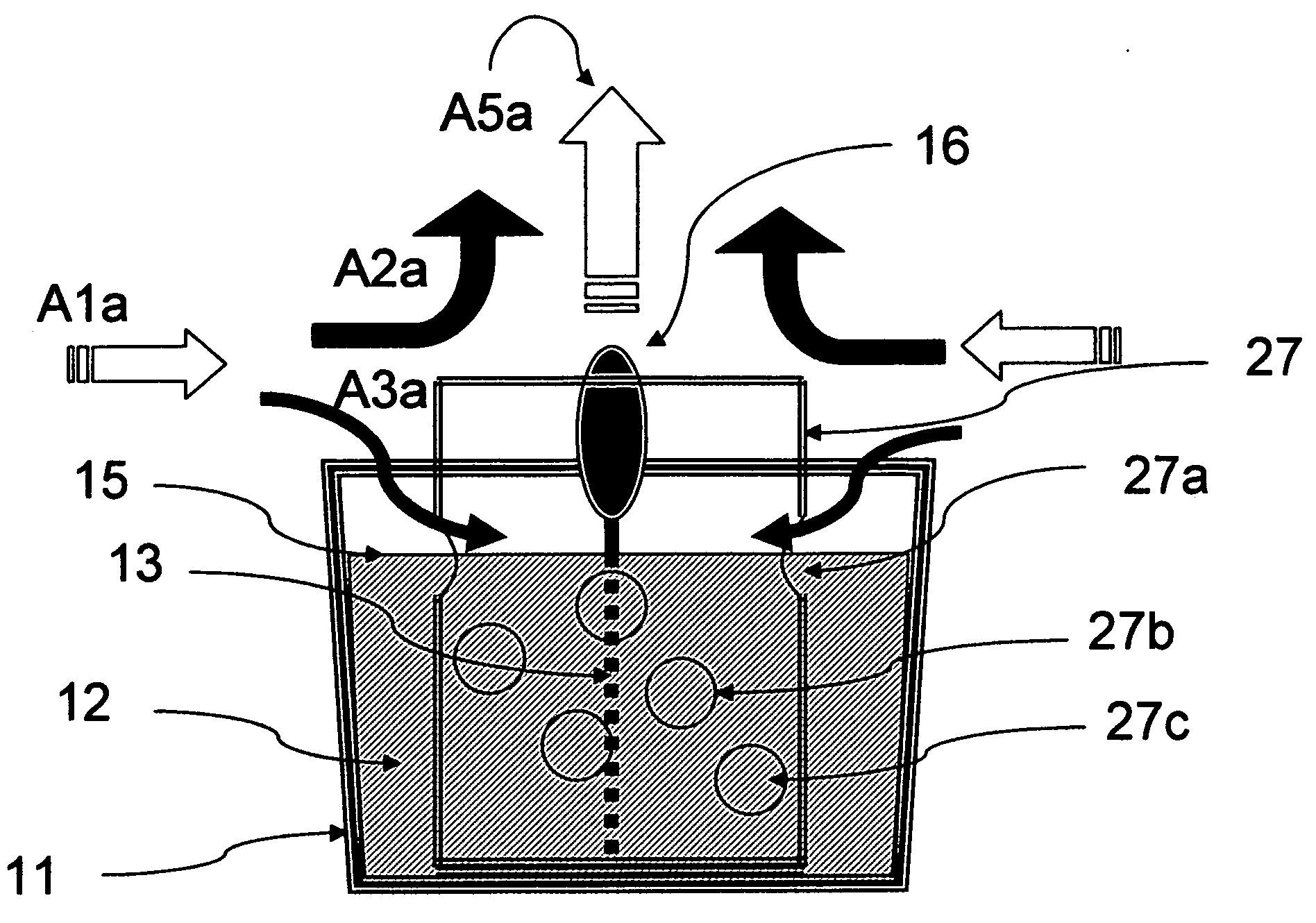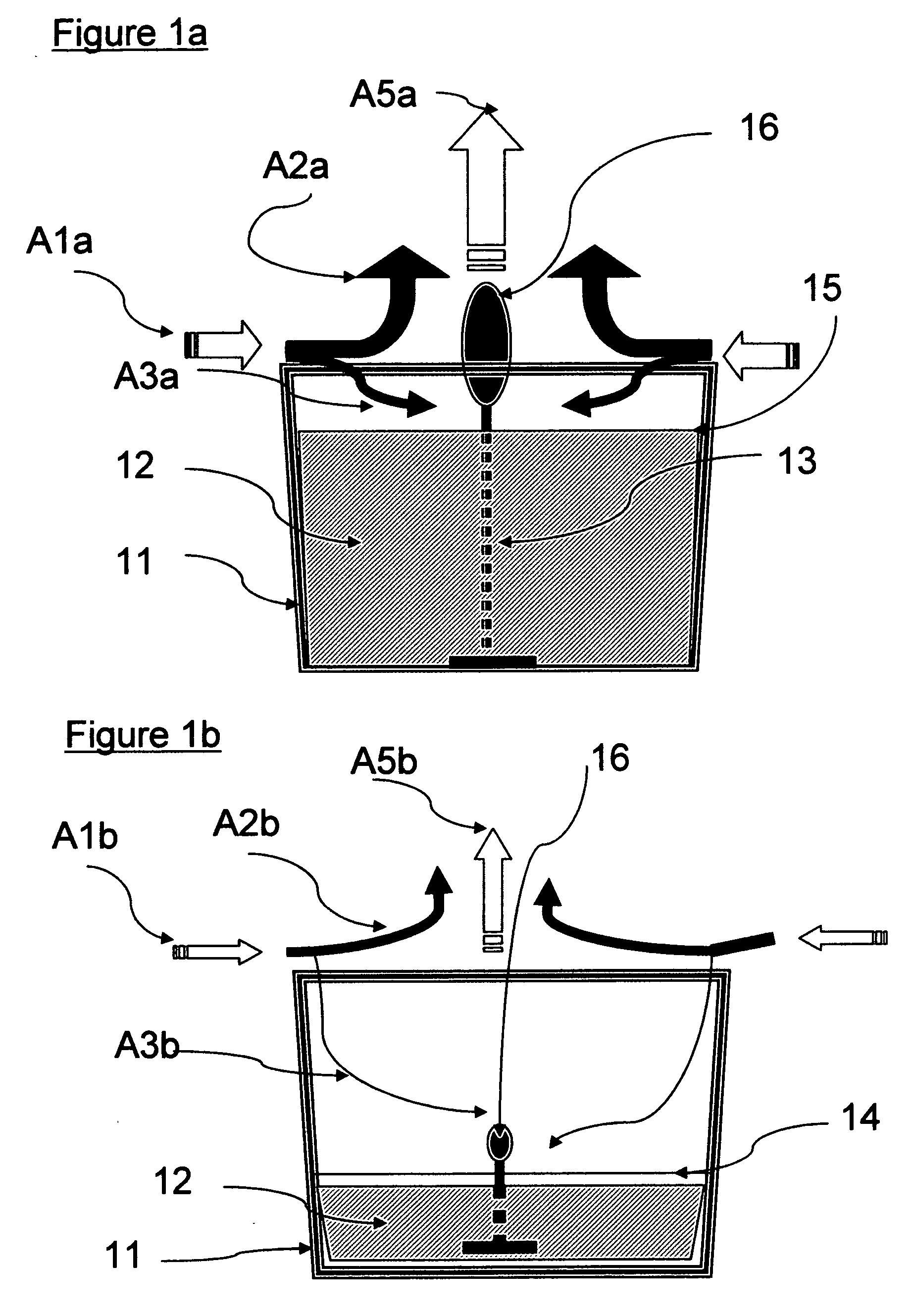Candle system for enhancing burning and improving volatiles performance and a manufacturing method for the same
a technology of volatiles and candle shells, which is applied in the field of candle shell systems, can solve the problems of messy and ugly candle shells, more damage to furniture surfaces, and more damage to furniture surfaces, and achieve the effect of better candle shelling
- Summary
- Abstract
- Description
- Claims
- Application Information
AI Technical Summary
Benefits of technology
Problems solved by technology
Method used
Image
Examples
embodiment 1
[0033]
[0034] The present invention is manufactured by the following method, but not limited. For example, the 12 holes with 8 mm diameter are made by using the electric drill on the sidewall of the plastic inner-tube 57 mm diameter×70 mm height. The four holes are placed at the upper portion of the inner-tube every 90 degree at ca. 20 mm lower from the top edge, another 4 holes are placed at the lower portion of the inner-tube every 90 degree and 30 degree turned from the upper holes at ca. 32 mm lower from the top edge, and more 4 holes are drilled at the lowest portion of the inner-tube every 90 degree and 60 degree turned from the upper holes at ca. 52 mm lower from the top edge. The above inner-tube can be applied with an appropriate size container, for example, 75 mm diameter×70 mm height glass jar, for an appropriate pillar-type candle, for example, 50 mm diameter×50 mm height to be sit in the inside of the inner-tube.
embodiment 2
[0035]
[0036] The present invention is manufactured as described in Embodiment 1 and then the aforementioned inner-tube is sit in the inside container, for example, 75 mm diameter×70 mm height glass jar, and an appropriate length of wick is set in the inside of the inner-tube followed by filling with an appropriate volume of melting candle wax either with or without volatiles, and being solidified for use.
embodiment 3
[0037]
[0038] Th container of the pres nt invention is compared with traditional candle container. Two commercial scented candles in the container (closed-candle) were purchased from a local supermarket. Both candle waxes and wicks are removed from the containers and are melted. The inner-tube is set to the bottom of one of the containers and the melting wax are poured into both containers with the same formula of commercial candle. After two hours, both candles' performances are compared.
Test CandleControl CandleTime(with a inner-tube having holes)(no inner-tube)0Very good burning with brighterVery good burning withflamebright flame2 hoursVery good burning and strongPoor burning with poorupdraft with very good fragrancefragrance performanceperformance
PUM
| Property | Measurement | Unit |
|---|---|---|
| diameter×70 | aaaaa | aaaaa |
| diameter×70 | aaaaa | aaaaa |
| diameter×50 | aaaaa | aaaaa |
Abstract
Description
Claims
Application Information
 Login to View More
Login to View More - R&D
- Intellectual Property
- Life Sciences
- Materials
- Tech Scout
- Unparalleled Data Quality
- Higher Quality Content
- 60% Fewer Hallucinations
Browse by: Latest US Patents, China's latest patents, Technical Efficacy Thesaurus, Application Domain, Technology Topic, Popular Technical Reports.
© 2025 PatSnap. All rights reserved.Legal|Privacy policy|Modern Slavery Act Transparency Statement|Sitemap|About US| Contact US: help@patsnap.com



